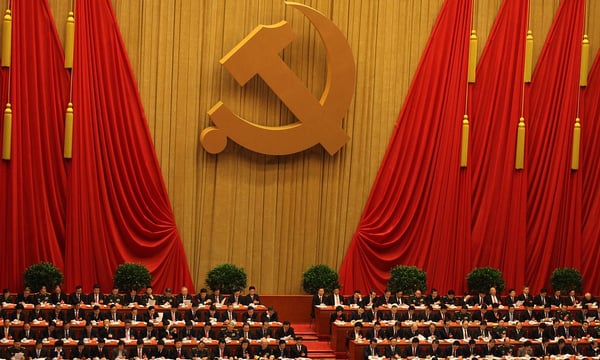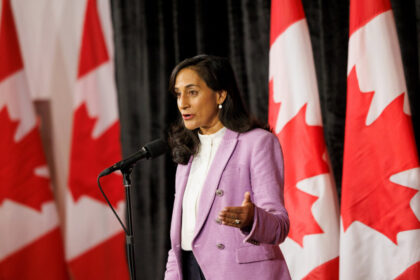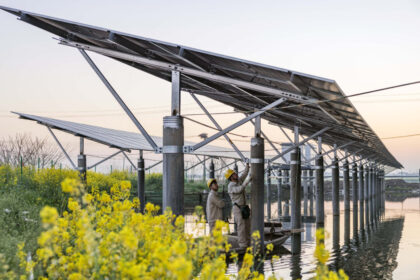Although not reported as widely as other major political events in China, such as party congresses, the plenary sessions or “plenums” of the Chinese Communist Party’s Central Committee are cornerstones of decision-making on key policy issues. As such, these meetings are well worth following not just by domestic Chinese analysts, but by a larger international audience, as well. The next plenary session of the CCP will take place from October 20-23, and it is expected to tease out China’s plans and positions on a variety of themes, many of which will have repercussions around the world.
In fact, it is through the plenums, which occur seven times over the five years of each Central Committee, that the directions of major state policies are set – or changed. With such adjustments come real-world consequences. The decision-makers, all members of a self-regulating single-party political system, have to get it right, as much to cement their own personal positions of power as well as to enhance the country’s well-being as a whole.
The American Chamber of Commerce in China explains the functioning and timing of the plenums well:
A plenum, or plenary session, is a meeting of the Communist Party’s Central Committee that occurs between party congresses. The Central Committee, which has about 370 full and alternate members, is formally China’s highest executive body, but in practice takes orders from the more exclusive Politburo. The meetings themselves are highly secretive, with attendees normally restricted to the premises of the Jingxi Hotel in Beijing for the duration of the plenum. Plenums are numbered for each one held after a party congress, which occurs every five years.
Beyond that basic outline, each individual plenum has a theme. Some will focus on economic issues, others on CCP business. Economic reform and party strengthening are key topics, particularly when there is an upcoming party congress. The plenums are defined by which number they hold, when during the year the plenum will be held, and what if any major events need to be addressed.
In order to fully grasp how powerful plenary sessions have been and can be, their role in and responsibility for two key decisively strategic moments is enlightening. First, in 1978, the Third Plenum ushered in the “reform and opening up” policy that has led to China’s dramatic development over the last four decades. Forty years later, following 2018’s Second Plenum, it was recommended that term limits on the Chinese presidency be removed, effectively giving Xi Jinping the possibility of unlimited power for the rest of his life.
This year’s Fourth Plenum will have to grapple with a number of unprecedented problems.
The first is the effect caused by trade tariffs set by both the United States, and to a lesser extent by the European Union, on Chinese products. It’s safe to say that Chinese policymakers, right up to and including Xi himself, never thought that tariffs, first initiated by U.S. President Donald Trump on April 2, would become a reality that could damage China’s economic growth prospects, while possibly even putting China’s political stability into peril.
The plenum may address other serious economic woes. The U.N. Trade & Development (UNCTAD) reported that China saw a 29 percent decline in foreign direct investment last year, “with inflows now 40% below their 2022 peak.” Such a reversal of interest and confidence in China as a destination for foreign investment is a relatively new and even threatening indicator of multiple problems that China is having with countries around the world.
After decades of unbalanced international trade, with the advantage going to China, much of the Western-oriented international community is close to saying “enough is enough” on issues that have been brought up to the Chinese government for decades. The 360-plus members of the Central Committee (counting both voting members and alternates) are not accustomed to this, and the CCP will need to decide how to respond.
Most importantly, the Fourth Plenum will be tackling these issues with an eye toward crafting the 15th Five-Year Plan, the blueprint for China’s policy for the period from 2026-2030.
The key arbiter of the results of the upcoming Fourth Plenum is, of course, Xi Jinping. Xi – who wanted a third, and possibly even a fourth term as head of the country, and managed to wrangle his way around China’s constitution to achieve it – is now in a dilemma of his own making.
Xi a communist idealogue. Yet CCP ideology has been massaged and manipulated over the last four decades into a manifesto that promotes support for private-sector ownership of at least some of the means of production and its accompanying enterprises. Today’s CCP stands in direct contradiction to everything that the communist revolution stood for in its early days.
Many CCP leaders saw the problem 25 years ago and began to tacitly, and then openly, embrace economic reforms that sail to close to capitalism. But for Xi and ideologues of his ilk (of whom it may be said there are not many left), anything not run and controlled by the CCP is suspect and in direct contradiction to what the party stands for.
So what are the likely scenarios that this Fourth Plenum, which will lay the foundation for 2026’s Five-Year Plan?
To look pragmatically at today’s China, a best-case scenario would shore up support for the private sector, defuse the acrimony that the international community has about Chinese overcapacity and intellectual property theft, not to mention illegal drug manufacturing and smuggling.
None of those issues is likely to emerge in any meaningful way, however. The private sector may get an honorable mention, but only as a stepchild to state-owned enterprises, which are near and dear to Xi’s heart, and which justify the work of the CCP.
The China Daily, one of China’s few English-language newspapers and a reliable mouthpiece of the CCP, said that the Fourth Plenum will address the “nation’s 2026-30 economic road map” as the “key focus” of its agenda.
The article added: “China is facing profound and complex changes in its development environment, with strategic opportunities, risks, and challenges coexisting and uncertainties and unforeseen factors growing.”
Such an admission is a telling statement for a paper and party that is usually hyperbolically positive about China’s overall situation.
At the Politburo meeting in July, during which the the Fourth Plenum was announced, several points were made that are likely to make it into the October agenda.
While utilizing various “structural monetary policy tools to support technological innovation, boost consumption,” efforts must also be made to “assist small and micro-sized enterprises,” the Politburo concluded.
The participants also “called for assisting foreign trade enterprises facing significant shocks, optimizing export tax rebate policies, and building high-level pilot free trade zones and other platforms for opening-up,” a clear signal that the tariffs are having an effect on the Chinese economy.
If the October plenum’s agenda and the final public statement that will be issued are anything like the content and tenor of the introduction it is being given, then the Fourth Plenum this coming month may take its own place in plenum history.






